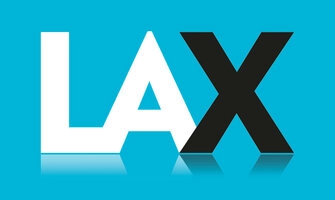Los Angeles International Airport (LAX)
Los Angeles International Airport (LAX) Review: Navigate, Eat, Recharge (2025 Snapshot)
Updated: July 19, 2025. LAX is one of the busiest U.S. “mega” hubs and remains in a multi-year modernization cycle that affects access, wayfinding, and passenger flow.
At a Glance
- Airport Code: LAX
- Airport Type: Large “mega” hub (size cohort used in industry satisfaction studies)
- Major Projects: Automated People Mover (APM), Consolidated Rent‑A‑Car (ConRAC) facility, landside access upgrades
- People Mover Target In-Service: Early 2026 (public guidance as of mid‑2025)
- Competitive Edge: Broad international & domestic route network plus premium lounge ecosystem
Terminals & Layout
LAX uses a horseshoe roadway (Terminals 1–8 plus Tom Bradley International Terminal “TBIT / Terminal B”). Some airside walkways now connect clusters (e.g., TBIT to adjacent terminals), but many connections still involve lengthy walks or shuttle time. Until the APM goes live, curbside congestion and inter‑terminal transfer uncertainty remain friction points.
Modernization & Construction Impact
Capital projects aim to create time‑certain transfers between parking, rental cars, transit, and terminals. Active construction produces periodic detours, visual clutter, and occasional curb delays; the payoff is expected once the APM and consolidated facilities are fully integrated.
Passenger Volume & Throughput
High passenger volume drives variability in checkpoint wait times, curb traffic, and gate area density. Load distribution among terminals influences crowding—long walks and packed gate pods are common during peak waves.
Customer Satisfaction Context
In the “mega” category, traveler expectations emphasize intuitive wayfinding, minimal curb‑to‑gate time, reliable Wi‑Fi, and quality food options. LAX’s transitional state tempers scores: amenities have improved, but landside and transfer friction still hold the experience back pending completion of mobility projects.
Wi‑Fi & Connectivity
Free, ad‑supported Wi‑Fi is available throughout public terminal areas. Bandwidth is typically adequate for email, basic calls, and moderate streaming; performance can dip during peak departure banks, so download heavy content early.
Food & Beverage
The dining mix blends national quick‑service anchors (predictable timing) with selected Los Angeles–origin brands for a sense of place. Official directories increasingly show estimated prep times, allowing tighter connection meal planning. Premium international areas (especially TBIT) host broader global and elevated options.
Lounges & Premium Experience
LAX offers multiple alliance and independent lounges, including flagship first and business lounges with full restaurant‑style dining, barista coffee, showers, and quiet/work zones. Access (status, cabin, or paid membership) can significantly improve long layover comfort.
Strengths
- Route Breadth: Extensive domestic + intercontinental network.
- Ongoing Investment: Large-scale projects promise structural improvements to access times.
- Dining Diversity: Mix of predictable quick eats and local brand presence.
- Premium Lounges: Several high-end lounges with quality dining and amenities.
- Free Wi‑Fi: Universal baseline connectivity supports remote work.
Pain Points
- Curb & Transfer Congestion: Pre‑APM era traffic and shuttle dependence add unpredictability.
- Construction Disruption: Temporary detours, noise, and signage overload.
- Connection Complexity: Non-adjacent terminal transfers can be slow for tight itineraries.
- Variable Satisfaction: Passenger perception lags until the full benefits of modernization are delivered.
- Time Buffer Inflation: Travelers still need larger landside buffers than at more integrated hubs.
Time Budget Tips (2025)
Inter‑Terminal Connections: Add generous walk/shuttle buffer; do not book the legal minimum if switching between widely separated terminals.
Arrival Planning: Schedule rideshare pick‑ups slightly away from peak bank surges if possible; monitor project advisories for lane closures.
Work Strategy: Claim power outlets early in less-trafficked gate areas; start heavy uploads/downloads immediately after settling.
Meal Planning: Use directory prep estimates; prefer fast casual or grab‑and‑go over seated dining on sub‑90‑minute connections.
Future Outlook
Commissioning the APM and integrating ConRAC + transit links should compress curb‑to‑gate variability, reduce shuttle bus dependence, and improve perceived reliability. Expect a gradual uplift in satisfaction once consistent time savings become evident.
Snapshot Score (Subjective Synthesis)
| Dimension | Score (1–10) | Rationale |
|---|---|---|
| Access / Transfers | 6 | Still reliant on shuttles & congested horseshoe until APM launch. |
| Amenities (Food/Retail) | 8 | Broad variety + local flavor; good quick‑serve coverage. |
| Connectivity (Wi‑Fi/Power) | 8 | Free Wi‑Fi baseline; power availability moderate (arrive early). |
| Lounge / Premium | 8 | Multiple top-tier lounges with robust dining/services. |
| Future Improvement Trajectory | 9 | Major capital projects are nearing operational phases. |
| Overall Satisfaction Positioning | 7 | Improving but transitional, construction still dilutes the experience. |
Traveler Profiles
- Short Domestic Connection (<70 min): Prioritize gate-to-gate path first; skip nonessential dining detours.
- Long Layover (2–4 hrs): Secure workspace or lounge early, then plan a structured meal + walk circuit.
- Overnight / Early Morning: Expect reduced food options; verify lounge opening times ahead.
- International Arrival + Domestic Connection: Clear immigration/customs, re‑check bags, and re‑screen; build a generous buffer if terminals differ.
Verdict
LAX in 2025 is a “transitional mega hub”: strong global connectivity and improved amenities offset by legacy access friction and ongoing works. Travelers who pre‑plan transfers, leverage lounge or quiet zones, and use meal timing data can smooth the experience while awaiting the next-stage infrastructure rollout.
Airport Tips
[ ] Check construction/lane advisories day-of
[ ] Confirm terminals for all legs (app/itinerary)
[ ] Download or screenshot boarding passes & lounge hours
[ ] Identify 2 food targets (primary + backup)
[ ] Note minimum “leave gate” time to start return walk

